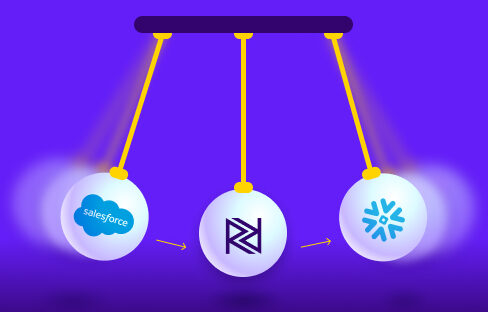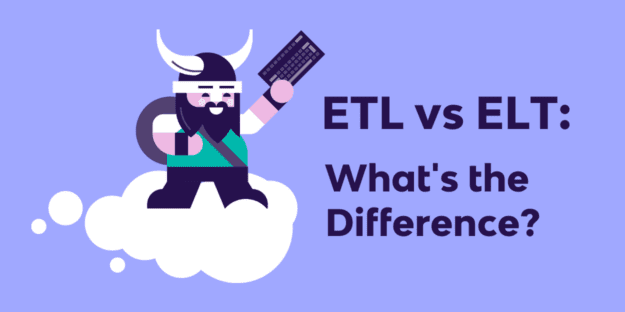The data fabric market is expected to grow to $6.97 billion by 2029. This is no surprise, as the data fabric architecture proves advantageous to many companies. Data fabric has many benefits, but the key 3 advantages are compliance and governance of data, data democratization, and data agility.
Simply put, it’s an all-in-one tool, providing better integration, accessibility, and analytics. Read on to discover more about data fabric architecture and what other benefits it can have for your business.
What is Data Fabric Architecture?
Forrester analysts coined the term “Data Fabric” which has recently turned into a business/tech category in itself. With business users wanting faster and better access to data to help their decision-making process, and tech organizations trying to simplify data management, the concept of data fabric is the layer of data that is available throughout an organization – democratizing access to data and insights.
What is Data Fabric?
There are dozens of definitions about what data fabric is, but probably IBM’s is the most comprehensive one. They define data fabric as “an information architecture that unifies data across an organization”. Agnostic to data environments, processes, use and geography, this architecture helps automate data discovery, data governance and data consumption to deliver business-ready data for analytics and AI.
By unifying data across an organization, data fabric democratizes access to data at scale. It is no surprise that Gartner selected “data fabric” as one of the “Top 10 Data and Analytics Technology Trends for 2021” and predicted that by 2024, 25% of data management vendors will provide a complete framework for data fabric.
What type of organization needs data fabric?
The concept of data fabric is particularly important for enterprises which have scaled their data capabilities using disjointed tools, platforms and systems across teams and divisions – and as a result have created silos which makes it difficult to reap unified benefits of data across the entire organization.
The main purpose of data fabric is to help democratize data access across the enterprise, at scale. It works as a single, unified architecture, with an integrated set of technologies and services, designed to deliver integrated and enriched data. This approach to streamline and unify data management processes can have profound business impact, a Forrester study Forrester study revealed the tangible business value of applying a unified Data Fabric architecture for an enterprise which included on average:
- 459% increase in Returns on Investment
- $5.8 Million business benefits on average
- 60X accelerated data delivery time
- 20X faster customer affinity analyses
Key Benefits & Attributes of Implementing Data Fabric in Your Organization
1. Unified Data Governance & Compliance
Data silos create massive headaches and challenges when it comes to data integration. Many organizations have their data spread across numerous databases, files, data warehouses, multiple clouds, and on-premises. Companies also often build silos of data lakes, warehouses, and platforms to support specific team needs. In addition, an increased number of data privacy regulations is putting pressure on organizations to implement stronger data security measures and compliance protocols – which can delay insights or new application development.
2. Data Agility
In a Forrester Analytics survey, data and analytics decision-makers often cited support for real-time and near-real-time data as a top data management requirement, especially to support new mobile apps. However, traditional data architectures fail to meet these new real-time data requirements, slowing down insights and application development.
In order to make organizational data readily-available to all stakeholders, data teams need to “rewire” existing systems so that data isn’t in locked up repositories that can’t be accessed without help from technology teams. One of the main upsides of establishing a data fabric architecture across an organization is that data will be readily available to employees, partners, and customers in real-time.
3. Democratization of Data
Business users are increasingly used to managing data and analytics platforms. In fact, they demand more self-service data solutions, so that they don’t have to rely on tech and data teams to access the insights they need. This democratization of data can only happen if on the one hand the business user has the required level of data literacy to produce the insights or reports needed, but also if the right infrastructure exists so that he doesn’t need to rely on data or tech teams to “mine” for the right data from the right repository. This independence will be a crucial step to empower teams with the agility they need to succeed.
4. Eliminate Data Silos
One of the major issues all growing companies face is data silos. The term refers to a group of data kept in a separate and isolated location, accessible only to a certain group within the same organization.
Data silos can harm your businesses, as keeping data isolated between departments can lead to complex issues. This includes inconsistent data, data duplication, poor quality analytics, wasted storage, reduced efficiency, and eventually – a reduction in profit.
A data fabric architecture eliminates the negative consequences of data silos. Remember, it’s a tool that has an interconnected approach, integrating data across silos and creating a smoother data exchange and analysis flow within the same organization.
5. Accelerate the Digital Transformation Process
Digital transformation is utilizing digital technologies to upgrade or change your business, including culture, marketing, customer service, and more. All successful companies embrace digital transformation.
Whether you are thinking of starting your digital transformation journey or are already in the process, a data fabric architecture can be of massive help. It will allow you to manage and analyze data more efficiently, maximizing its potential value.
6. Improves Decision Making
Quality information is the key to making a reasonable decision. If you are misinformed or lack crucial information, you will have a more challenging time deciding for your company. This is where data fabric comes in!
With an intricate and vast network of data, as well as open accessibility and real-time analysis, this tool enables quick and confident decision-making. There’s no place for misuse of information or misinterpretation, which can cause serious havoc in the wrong circumstances.
7. Reduces Cost
Open and accessible data architecture is much more efficient than ones burdened by countless data silos. And everybody knows that when efficiency goes up, the cost goes down.
For instance, because everybody will have access to the information they need, there will be no need to constantly ask for help from the IT sector. In other words, your employees can focus on other more important aspects of the business.
In addition, data fabric architecture provides real-time analysis and accurate data, making things easier for your information architecture and allowing employees to make correct and on-point decisions and analyses.
Last but not least, data fabrics are a JIT (just-in-time) system. They are connected to various data sources but only deliver the specific data a user needs. This cuts time and increases efficiency, and, as a result, reduces cost.
Is your business operating in silos? Ready to democratize your data? Chat with a data expert who’s ready to assist and guide you through the process.
Minimize the firefighting. Maximize ROI on pipelines.





